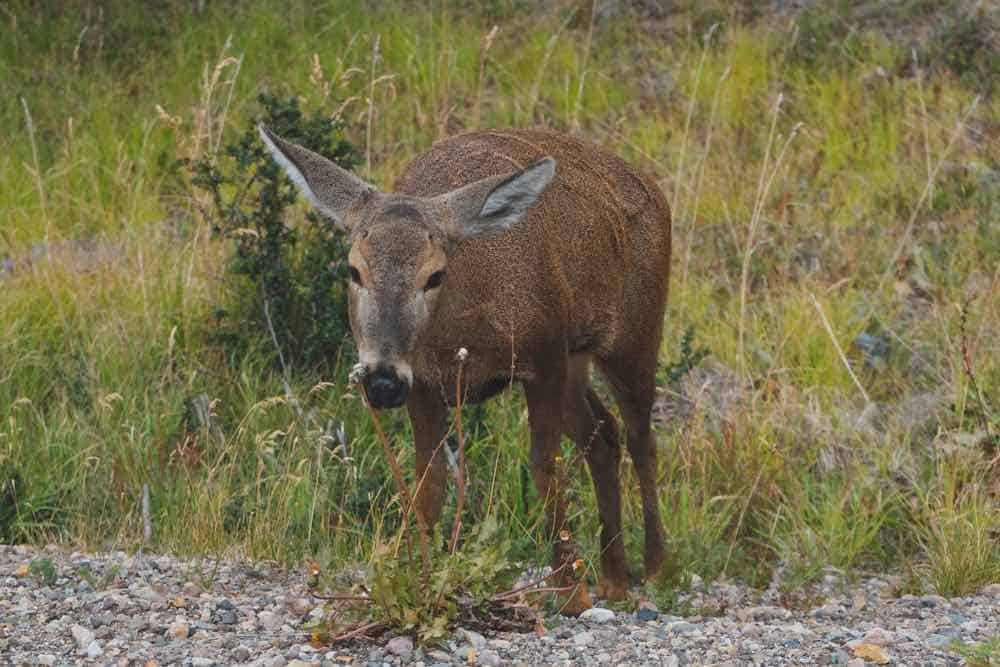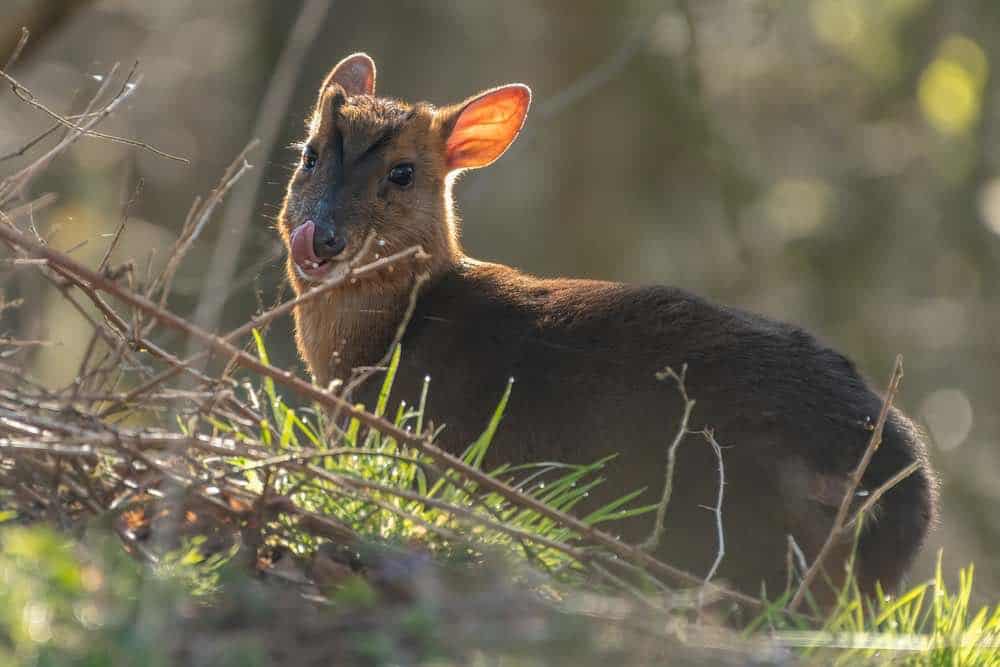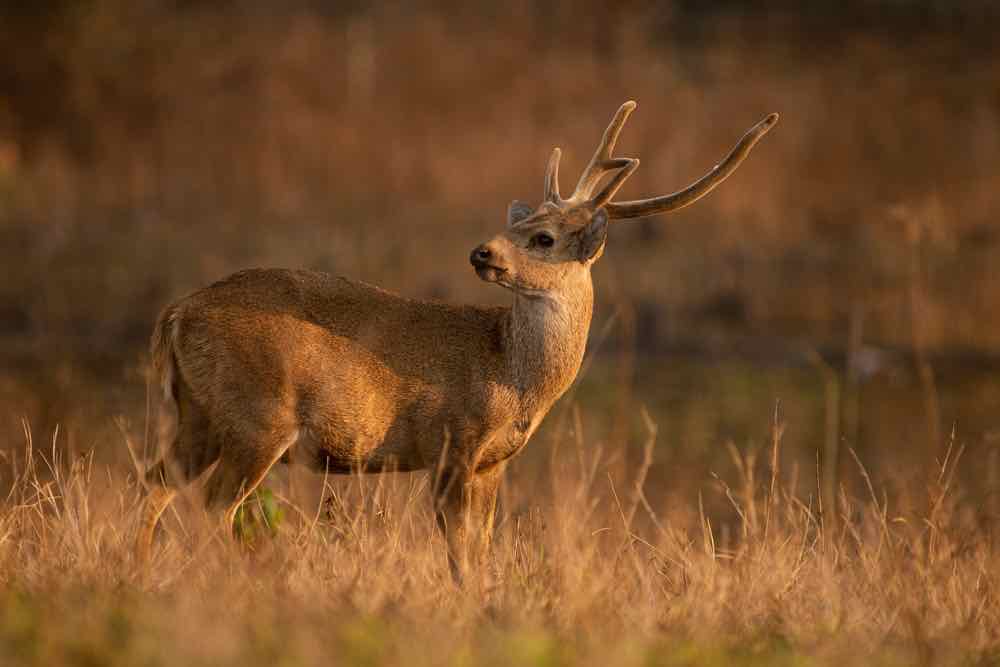The red brocket deer, or Mazama americana, is a lesser-known species of deer found in South and Central America. It’s one of ten species of brocket deer with as many as 14 subspecies of its own, including the Yucatan brocket deer.
The red brocket deer is a unique and elusive species that most people haven’t heard of. Keep reading to learn more about this fascinating animal, what it looks like, how it behaves, and so much more.
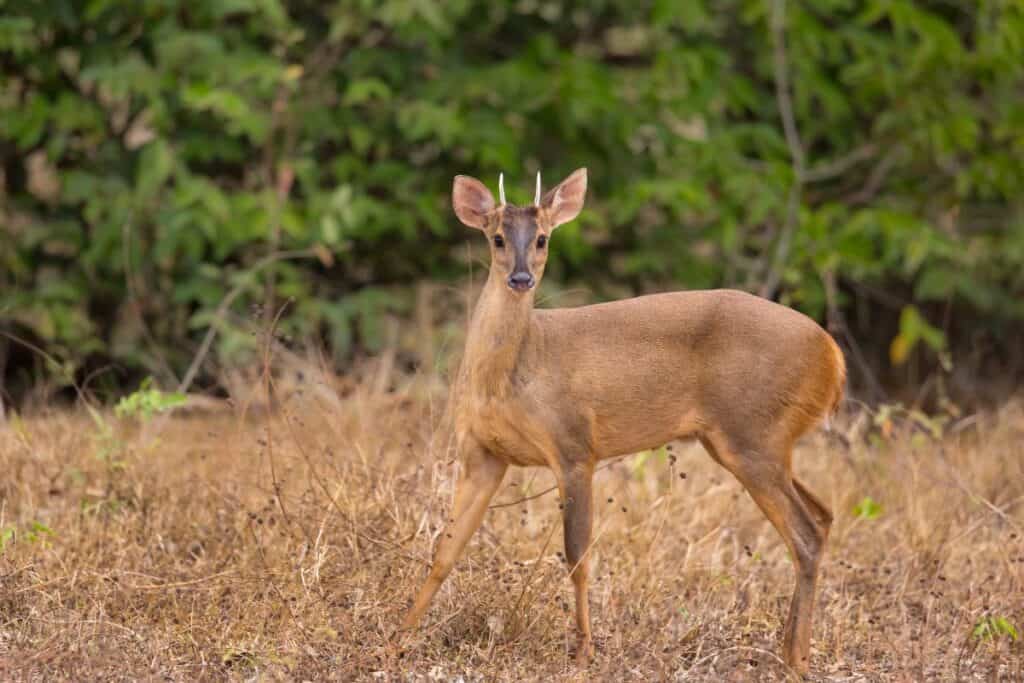
What Does the Red Brocket Deer Look Like?
The red brocket deer is a small to medium-sized species, only about two-thirds the size of the more commonly known whitetail deer usually ranging from 25 to 31 inches tall and between 44 and 121 pounds.
It’s the largest of the brocket deer species and sports reddish-brown fur with a lighter greyish head and neck and darker brown legs. Like many other deer, the tail is white but rounder than most of its cousins.
The legs and neck of these deer are proportionally longer compared to its overall size, with a large hind end and curved back. Some subspecies have longer legs than others depending on the environmental adaptations that are most useful to them.
Males have short little antlers that are just one spike each which shed annually and are otherwise coated in velvet, so they don’t sport the most impressive antlers in the deer family.
Fawns are spotted as is typical for most species of deer and their legs don’t darken until later on in life as they age.
Behavior of the Red Brocket Deer
The red brocket deer evolved to thrive in rainforests and will often occupy edge environments as well, such as the perimeter of a forest where they can access both deep brush and more open areas.
They can easily move through vines and are apt at blending into their surroundings to avoid predators. Red brocket deer are naturally very shy animals and their first defense is to freeze when threatened, then flee into the forest for cover. They are also great at swimming and frequently use water as a means of escaping danger.
The only sound produced by the red brocket deer is a piercing cry to alert others that a predator is approaching, and they will also react by snorting and stomping when alarmed.
Unlike other species of deer that are active only outside of full daylight hours, the red brocket deer is active and day night to graze and forage in the forest and along the edges. The red brocket deer have a fairly flexible diet, but they are mostly frugivores. This means that their diet is primarily made up of fruits or meatier plants, nuts, seeds, roots, and shoots as well as fungi if other sources become scarce. Leaves are also a staple in their diet.
It is unclear why, these particular deer have four stomachs, only one of which is real and fully functioning; the other three are “false”.
Most of the time red brocket deer are solitary animals, although they can sometimes be observed in pairs. The range of each deer’s territory is just over half a mile, which they will scent mark to let nearby individuals know the bounds of their space. They are considered sedentary animals and will not migrate very far from where they’re born.
Interestingly, there is no single season for mating and birthing fawns. Some subspecies do tend to have fawns during specific times of the year based on the area in which they live, but others tend to be opportunistic rather than tied to any one season.
Younger does will sometimes have two fawns together, while older females will only carry one at a time. Just like other deer, females will hide their babies carefully in the brush before daylight. They then go out and forage, returning periodically to feed their concealed fawns.
If a fawn is caught off guard and startled, they will dash a short distance away, then drop back down and curl up in the hopes of being completely camouflaged.
The red brocket deer is a particularly resilient and hardy species that does not often succumb to disease and illness. Generally speaking, red brocket deer can be expected to have a seven to twelve-year lifespan with the most likely reason for death being predation.
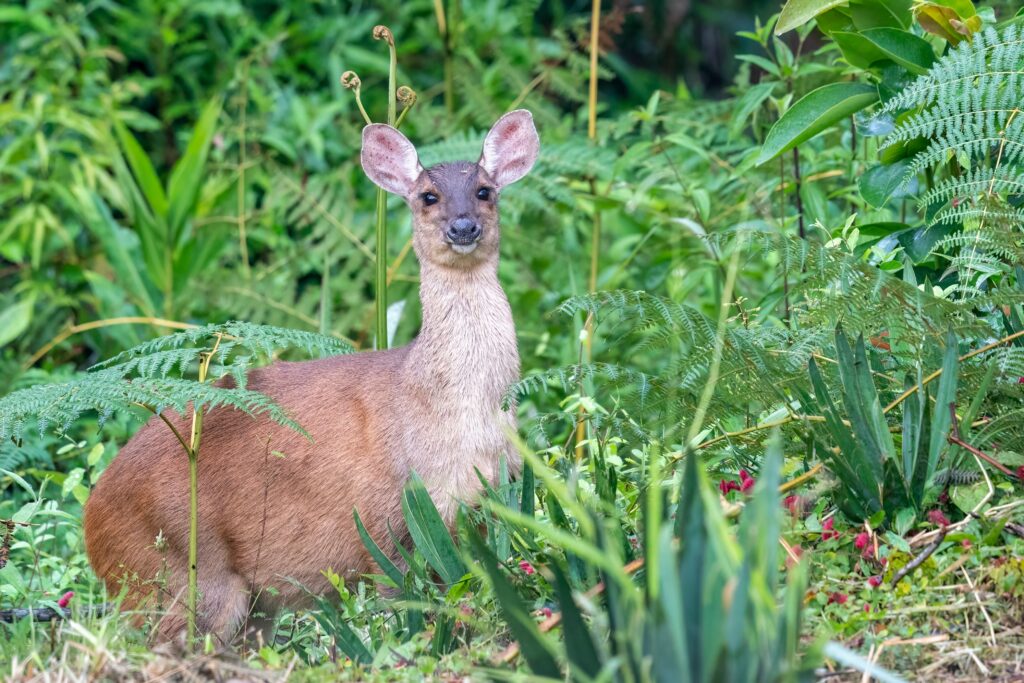
Where the Red Brocket Deer Comes From
Red brocket deer are found in South and Central America in the Amazon Basin, ranging from east of the Andes up to the Rio Grande.
They also appear in Trinidad as the only wild ruminant on the island, and likely swam there from the mainland coast. Trinidad is also home to captive populations of these deer.
History of the Red Brocket Deer
Due to the natural timidity of the red brocket deer, not much is known about their history. It’s also unclear exactly how many subspecies there truly are and is the subject of debate among scientists; genetic studies into detailed taxonomy are still ongoing.
Hunting the Red Brocket Deer
If you’re an avid hunter seeking a new and unusual type of game with its own exciting challenges, the red brocket deer is a possibility in South and Central America, and also in Trinidad.
While they are mostly hunted and traded by locals as a food source and as a form of pest control in agricultural areas, there are a limited number of opportunities for foreigners to legally hunt them. The best place to start would be the Yucatan, which hosts a seven-day hunting adventure. In most places, spring and fall are optimal times of year for red brocket deer hunts.
Generally speaking, the dry season is the best time to go out as the mud in the wet season makes traveling on roads nearly impossible. In addition, the red brocket deer are spread throughout the jungle because water is readily available to them in the rainforest during wetter times of the year, so they won’t need to seek out water sources where they will be more exposed and thus easier to track down.
The red brocket deer is a surprisingly challenging prey, and tree stands with ripe fruit nearby are generally the most successful way to get a good shot. This allows them to come closer to the hunter, as they are keenly aware of their surroundings and not easy to catch off guard. “Spot-and-stalk” hunting when they can be seen in fields is also a popular method, but a bit more challenging due to the habits of this animal and how elusive they tend to be.
Since they are typically hunted at close range, a shotgun loaded with buckshot is the preferred weapon for the red brocket deer.
Because the antlers on males aren’t particularly impressive, they aren’t sought out for trophy hunting. Instead, the environment and the experience as a whole is the main reason why hunters are interested in the red brocket deer. Their meat is also sought after in the area and is often available for purchase in markets in bigger cities.
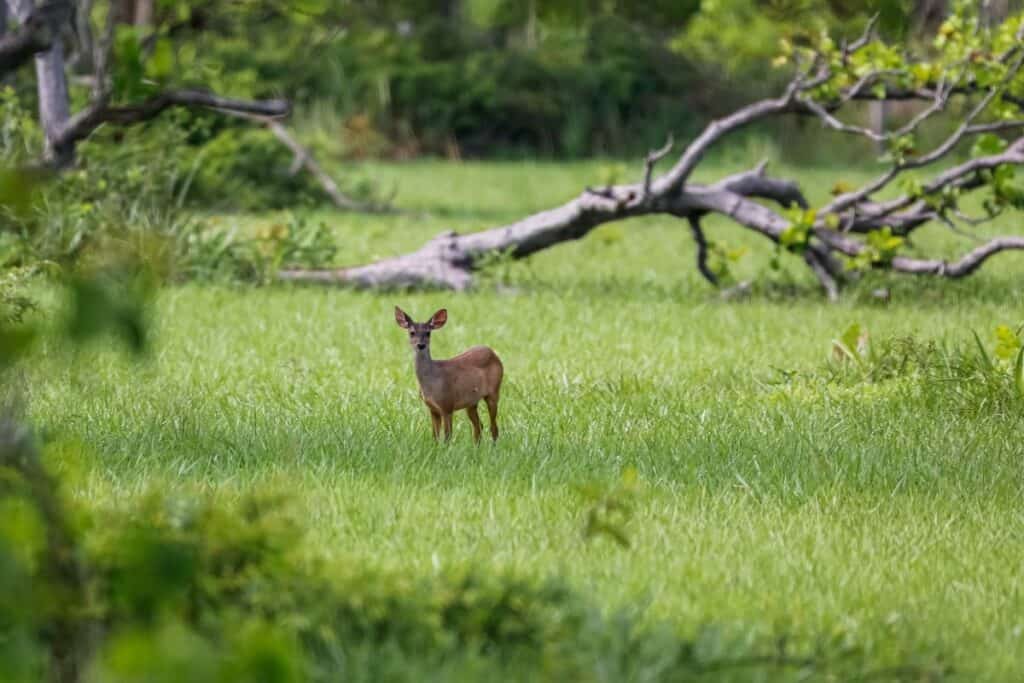
Fitting Into the Ecosystem
As a part of the ecosystem where they live, the red brocket deer serves several important roles. When they forage on fruits, their droppings help to disperse seeds throughout the region. They also alter local plants through their grazing habits, providing natural landscaping to help other plants thrive.
The red brocket deer is also an important prey species for many predators, including pumas and jaguars.
In habitats that overlap with humans, farmers often consider the red brocket deer a nuisance as they can destroy crops when they graze. They have also been known to get into and forage in gardens in residential areas.
Conservation Efforts
When it comes to conservation, the red brocket deer is an interesting case. While they are known to be “one of the most hunted mammals in the Amazon” according to IUCN and are affected by local hunting, they also aren’t listed as threatened or endangered as there isn’t enough data to determine if intervention is necessary.
It is known that they experience habitat loss in Paraguay and Venezuela, and they have been over-hunted in Tobago where they are no longer present.
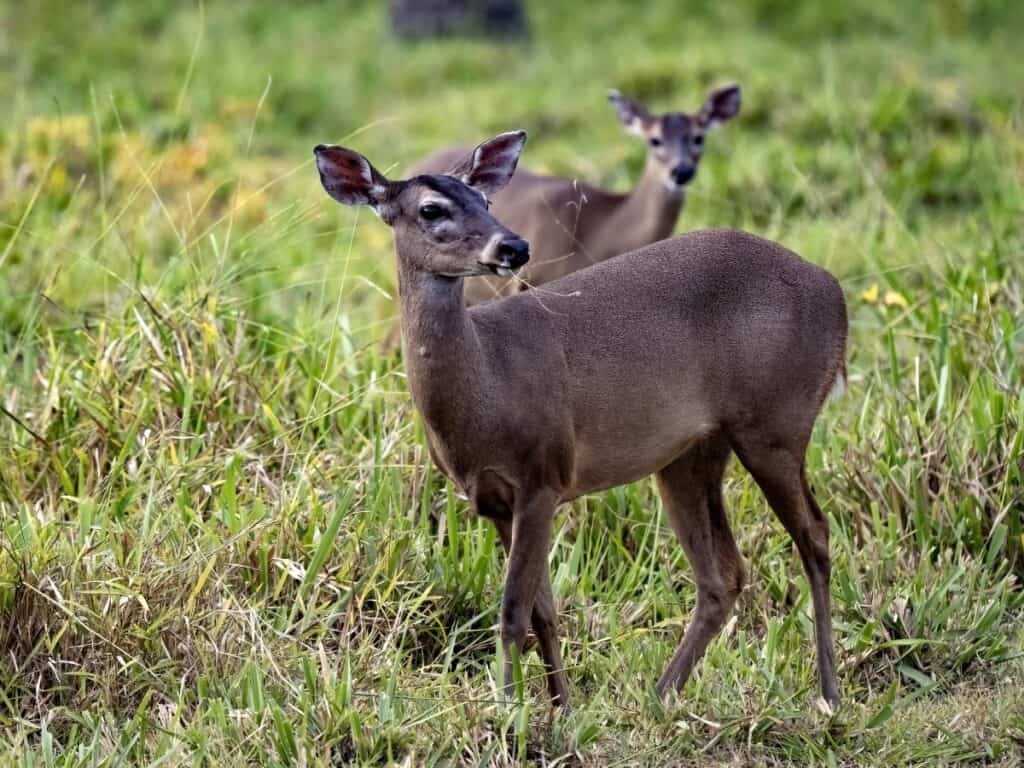
The Mystery of the Red Brocket Deer
The red brocket deer is a species that not many people know much about due to its elusiveness and limited geographic range. They’re a great animal to learn about if you’re interested in unusual and rare creatures or if you like to travel and hunt less commonly pursued game.
For even more information on other lesser-known types of deer and the forests they inhabit, find more articles here.

